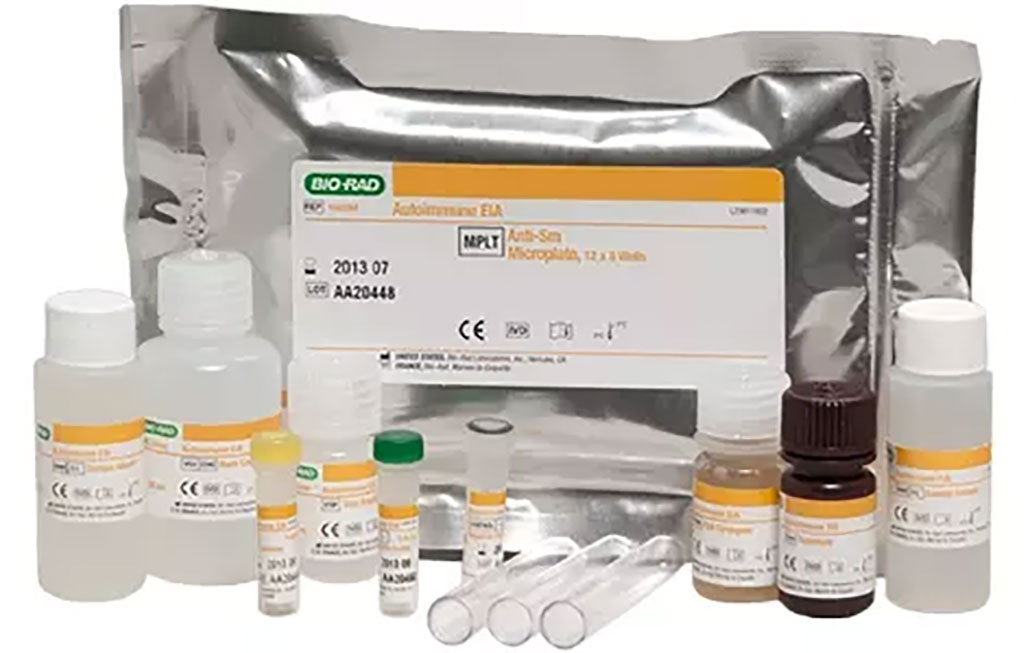Anti-Double Stranded DNA Antibodies Diagnose Systemic Lupus Erythematosus
Posted on 13 Jul 2022
Anti-double-stranded deoxyribonucleic acid antibodies (anti-dsDNA Abs) embrace antibodies with a wide spectrum of fine molecular specificities that are produced persistently in the context of true autoimmunity or transiently in context of infections or other clinical conditions.
Numerous studies have yielded insight into specific aspects of anti-dsDNA Abs, such as their genetics, immunogens and targets, as well as their diagnostic and pathogenic impact, particularly in Systemic Lupus Erythematosus (SLE). The clinical significance of anti-dsDNA Abs largely depends on the principle of the assay employed and the analytical variables of the methods used to quantify and characterize them.

A team of Immunologists at the University Hospital Mohamed VI (Marrakech, Morocco) and their colleagues carried out a cross-sectional study on 113 adults and pediatric patients presenting various clinical conditions that included 53 SLE, other systemic autoimmune rheumatic diseases (OSARD) including 23 rheumatoid arthritis, nine Sjögren syndrome, eight mixed connective tissue disease (MCTD) five systemic sclerosis (SSc, inflammatory myositis (IM), and 10 non-auto-immune clinical conditions (NAICC), including five patients with inflammatory neurologic diseases and five cases of non-lupus glomerulonephritis. The mean age of patients was 39.9 ± 15 years (range, 11–85 years), and they were predominantly females (female to male sex ratio = 4.94).
Blood samples collected from the patients and serum samples were tested for anti-dsDNA Abs using the ELISA Kallestad Anti-dsDNA EIA, IgG conjugate (Bio-Rad Laboratories, Hercules, CA, USA) combined with and Crithidia luciliae fluorescence test (CLIFT, Kallestad, Bio-Rad), threshold: 1:10). Screening for ANA was performed by the IIF method using a Hep-2 cell substrate (Kallestad, Bio-Rad), threshold: 1:160 for patients older than 18 and 1:80 for those younger than 18).
The investigators reported that overall, 42.4% (n = 48), 27.4% (n = 31), and 78.8% (n = 89) of patients with selected clinical conditions were positive for DNA-ELISA, DNA-CLIFT, and ANA-IIFA anti-dsDNA Ab screening, respectively The proportion of ELISA-positive patients with SLE was more than that of CLIFT-positive ones (77.3% versus 54.7%). The DNA-ELISA test was positive for 48 patients (42.4%), among whom 34 patients had titers higher than 50 IU/mL, 16 patients had titers varying between 30 and 50 IU/mL, whereas 32 patients had equivocal titers (15–30 IU/mL), and 31 patients were negative. ANA were positive for 78.7% of patients, including 48 patients (90.5%) with SLE. Among the 50 patients positive for DNA-ELISA, 31 (62%) were also positive for CLIFT, and these patient were significantly associated with high titers of DNA-ELISA.
The authors concluded that a diagnostic strategy based on the detection and quantification of anti-dsDNA Abs by ELISA, followed if positive by CLIFT and ANA-IIF screening. High titers of anti-DNA Abs on ELISA associated with positive CLIFT are almost relevant, especially when associated with a homogeneous ANA-IIF pattern, taking into consideration the clinical criteria of SLE. The study was published on June 9, 2022 in the journal Practical Laboratory Medicine.
Related Links:
University Hospital Mohamed VI
Bio-Rad Laboratories




 assay.jpg)








